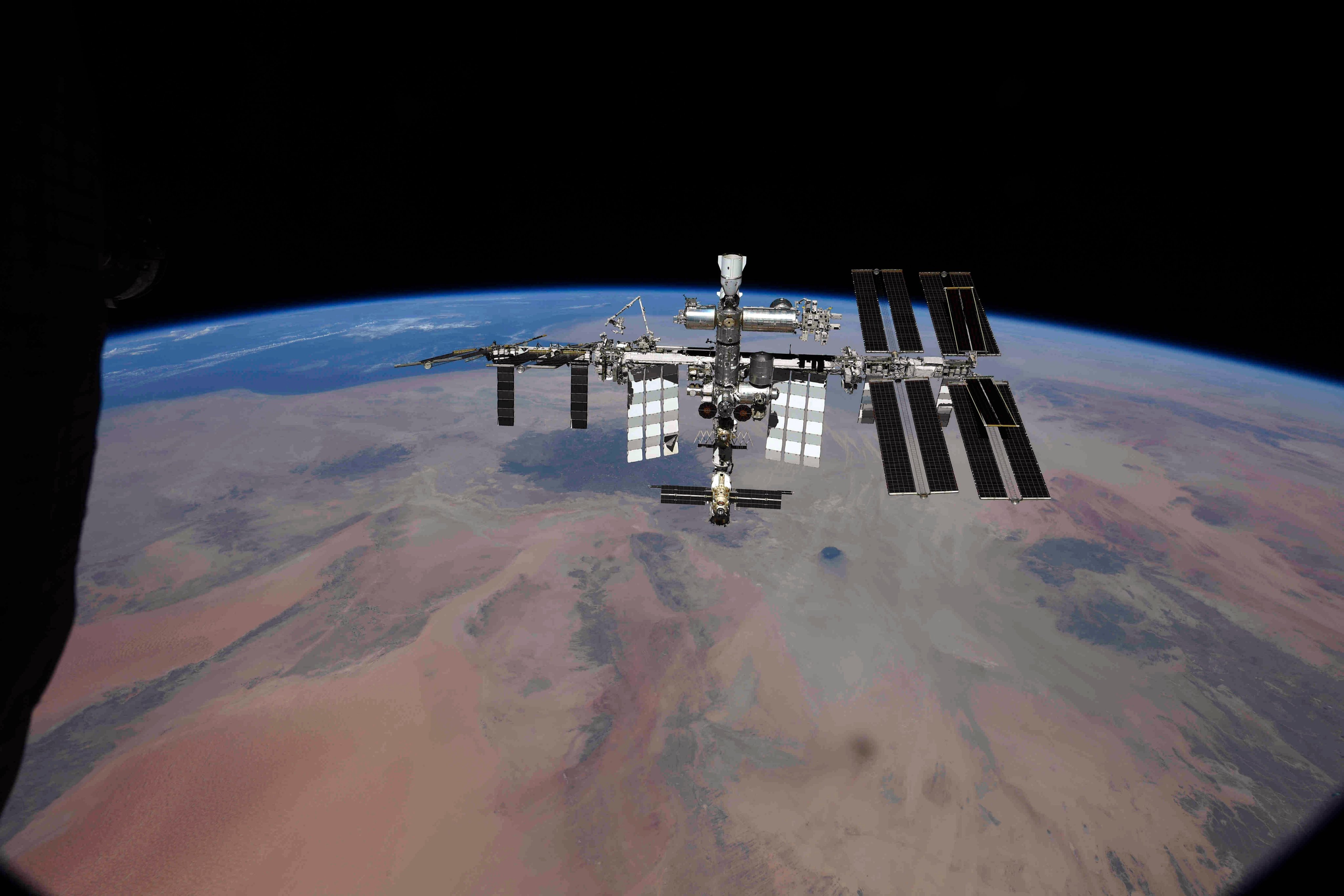Space station dodges space debris from decades-old Pegasus rocket

The International Space Station dodged a fragment of a decades-old rocket body early Friday morning, continuing a stretch of space debris threats to the orbiting laboratory.
On Friday (Dec. 3) at around 3 a.m. EST (0800 GMT), a Russian cargo ship docked to the International Space Station fired for a little under three minutes to lower the facility's orbit and ensure that it would pass safely by the debris, according to statements from NASA and its Russian counterpart, Roscosmos.
In a tweet posted on Wednesday (Dec. 1), Roscosmos flagged the risk posed by the rocket fragment, which it said was estimated to pass as close as 3.4 miles (5.4 kilometers) to the space station.
Related: Worst Space Debris Events of All Time
Just the day before the alert was posted, on Tuesday (Nov. 30), NASA had been forced to delay a spacewalk scheduled for later in the day due to concerns about debris. The agency has not specified what that debris represents, but NASA astronaut Thomas Marshburn and Kayla Barron were able to conduct their excursion on Thursday (Dec. 2).
All seven astronauts currently living and working on the space station faced a still more serious space junk scare just a few weeks ago. On Nov. 15, the crew was forced to shelter in the two passenger spacecraft currently docked to the space station during two close passes with orbital debris.
That debris came from a Russian anti-satellite test conducted on one of its own defunct satellites; fragments from the incident might threaten astronauts on the station for years to come, experts have said.
Get the Space.com Newsletter
Breaking space news, the latest updates on rocket launches, skywatching events and more!
Today's threat was much longer in the making, however. According to a NASA statement, the debris dubbed object 39915, was created in 1996, when the upper stage of a Pegasus rocket that had launched two years prior broke up.
The evasive maneuver should not affect the next scheduled launch to the International Space Station. On Wednesday (Dec. 8), a Russian Soyuz capsule will blast off carrying a veteran cosmonaut, a Japanese billionaire and his production assistant; the trio are scheduled to spend about 12 days in space, including more than a week aboard the orbiting laboratory.
Email Meghan Bartels at mbartels@space.com or follow her on Twitter @meghanbartels. Follow us on Twitter @Spacedotcom and on Facebook.
Join our Space Forums to keep talking space on the latest missions, night sky and more! And if you have a news tip, correction or comment, let us know at: community@space.com.

Meghan is a senior writer at Space.com and has more than five years' experience as a science journalist based in New York City. She joined Space.com in July 2018, with previous writing published in outlets including Newsweek and Audubon. Meghan earned an MA in science journalism from New York University and a BA in classics from Georgetown University, and in her free time she enjoys reading and visiting museums. Follow her on Twitter at @meghanbartels.









